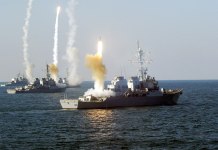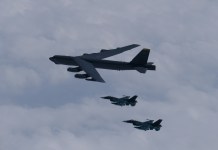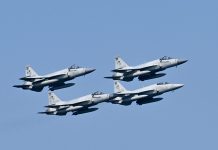Even though the US is considered far ahead of Russia and China in the defence technology sector, a new book penned by Christian Brose titled – The Kill Chain: Defending America in the Future of High-Tech Warfare, laments the US establishment and explains how and where the US is lagging behind China and Russia.
No Boom, No Bang: Turkey’s S-400 Missiles Failed To Achieve Anything: Greece
The book is an indictment of the bureaucratic mess in the Pentagon which severely impacts early adoption of commercial technologies by the US military.
Being John McCain’s senior policy advisor and staff director of the Senate Armed Services Committee, Brose experienced first-hand the intelligence reports concerning Chinese and Russian military progress.
He attempted to influence the Department of Defence’s (DoDs) strategic, operational, and technical response to the challenges that China and Russia pose to American security.
The book laments about how the ways and means of the American power are being fundamentally disrupted, mainly with the emergence of great power competitors such as China, and by the emergence of new technologies.
It lays bare how the Pentagon is reluctant to embrace new commercial technologies that are growing at an unfathomable pace.
Brose laments the complacency and the lack of seriousness on part of the DoD to maintain the technological lead it held towards the end of the Cold War. He talks about how America dominated what is called ‘the kill chain,’ a term which Brose claims ‘pretty much everybody inside or who has worked with the United States military is familiar with.’
Describing ‘the kill chain,’ he says the term involves ‘gaining understanding about what is happening [wherever militaries compete or are in conflict] … making a decision about what to do and taking action that creates an effect to achieve and objective.’
Speaking to the leading US think tank, Centre for Strategic & International Studies, Brose describes the kill chain as being a “process of what militaries do in competition – seeking to understand their environment, make decisions and take actions.”
“And I felt that was an important and sort of helpful framing because that’s ultimately the way to think about how technologies can and should enable us to change the way we operate, build and operate military forces.
The sort of the tools we will use, the technologies we will use will change, that end state of improving, and accelerating and scaling human ability to understand, decide and act to the sort of dangerous high-pressure military contests, that is pretty much universal. In a nutshell, it’s really trying to think through where we are and where we are going,” he says.
The book highlights the frustration of many technologists eager to help the US military because it does not adopt commercial technology more readily than they believe it should.
The DoDs acquisition bureaucracy creates backbreaking hurdles in embracing new ideas. Even the US Congress questioned the Army on its reluctance to adopt the commercially developed Palantir intelligence analysis software system.
“If I got under your tent for a day, I could solve most of your problems,” Google CEO Eric Schmidt once told the head of US Special Operations Command. Earlier this year, SpaceX CEO Elon Musk confidently claimed that a manned F-35 would be no match against a semi-autonomous drone in air-to-air combat.
There is increased unhappiness about the way the overly restrictive Pentagon is embracing new technology, available just next door.
Brose’s experience on Capitol Hill enhanced his understanding of China’s remarkable gains in the areas of cyber, space, networking, and advanced computing in all its forms.

He argues the DoD did little to capitalise on the stunning advances the country’s commercial high-tech sector witnessed during the information revolution. The military has been oblivious, or you could say disinterested, in the ground-breaking innovation taking place in Silicon Valley, claims the book.
The book highlights the sluggish pace at which the US hypersonic weapons programme is advancing, with China and Russia far ahead in the race. China has successfully tested its new hypersonic weapons, latest being the WU-14 to be carried by the DF-17 missile with a range of more than 1,550 miles.
On the other hand, Russia has deployed the Peresvet laser since December 2019. The country’s Avangard hypersonic glide system went into serial production last year. The Kinzhal hypersonic ballistic missile, with the capability to reach Mach 10, or 7,672 miles per hour, has undergone successful operational testing.
The book lays bare the vast spectrum of weapons technologies that China and Russia could use against the United States without being overpowered. Brose’s book calls out the inability of the Pentagon to capitalize upon the groundbreaking progress achieved by the commercial sector in artificial intelligence, quantum computing, machine learning, space technologies, and the Internet of Things.
The book presents compelling evidence on how China is overtaking the US in all areas of modern warfare, devising strategies and technologies that seek to confront US power in new and unchallengeable ways.
In a nutshell, the book seems like an obituary of a global superpower that dominated the planet for more than a century.




